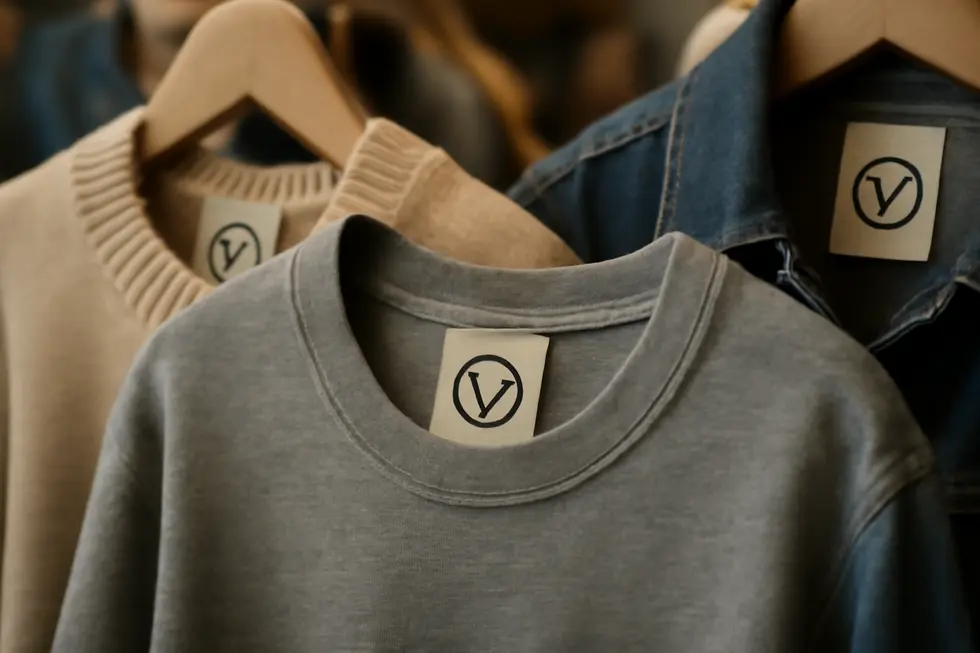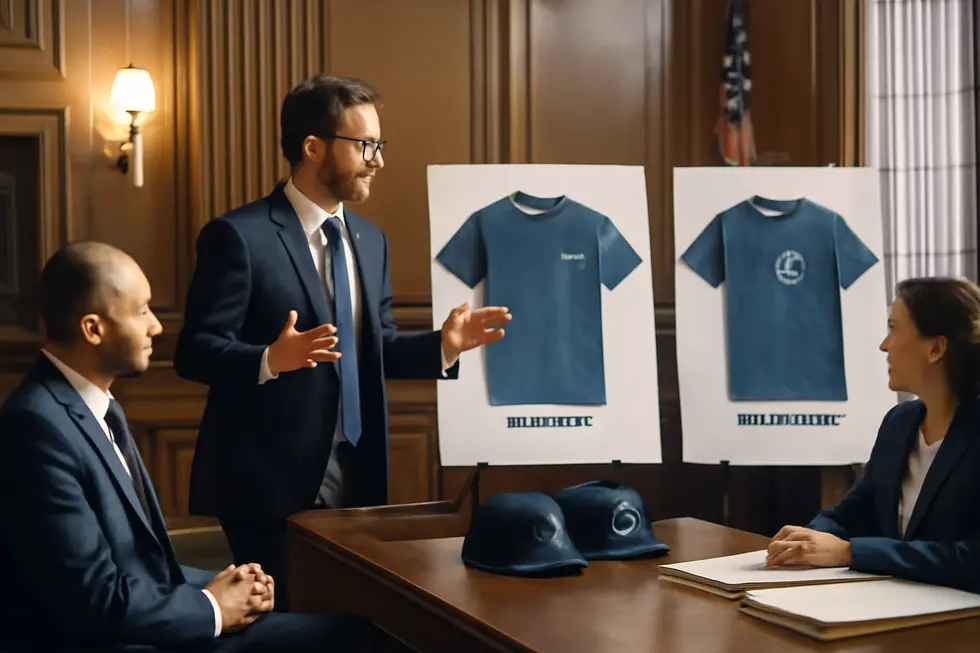Introduction
Protecting a clothing brand’s identity is vital for business owners navigating today’s competitive fashion industry. While copyright law offers minimal coverage for actual apparel designs, trademark law provides the essential legal framework to secure brand names, logos, and distinctive features associated with fashion brands. Understanding how trademarks serve as the core tool in establishing and defending a clothing brand’s identity helps business owners uphold their brand’s market presence and value. This article explores key aspects of trademark protection, outlines legal enforcement challenges unique to clothing brands, and highlights strategic approaches to maintaining brand integrity using trademark law. Each chapter builds a comprehensive understanding, empowering business owners to make informed decisions in protecting their copyright clothing brands effectively.
Tables of Contents
Chapter 1: Trademark Protection for Copyright Clothing Brand Identities
- Harmonizing Trademark and Copyright Law: A Dual Approach to Securing Fashion Brand Identities
- Harnessing Technology and Economics to Fortify Trademark Protection in Fashion Brands
- Navigating the Strategic and Societal Impact of Trademark Safeguards on Fashion Brands
Chapter 2: Legal Enforcement and Challenges in Copyright Clothing Brand Protection
- Integrating Technology and Law: Modern Strategies to Combat Infringement in Fashion Brands
- Economic Consequences and Market Pressures in Enforcing Clothing Brand Rights
- Navigating Geopolitical Complexities and Societal Factors in Fashion Trademark Enforcement
Chapter 3: Strategic Use of Trademark Law in Managing Copyright Clothing Brand Integrity
- Harnessing AI and Machine Learning to Reinforce Trademark Protection for Clothing Brands
- Economic Impact of Trademark Enforcement on Brand Value and Market Stability in Fashion
- Navigating Global Challenges and Cultural Expectations in Trademark Protection for Clothing Brands
Chapter 1: Trademark Protection for Copyright Clothing Brand Identities

1. Harmonizing Trademark and Copyright Law: A Dual Approach to Securing Fashion Brand Identities
Trademark law serves as the primary shield for clothing brands by protecting distinctive identifiers such as brand names, logos, and slogans. These elements uniquely signify a brand’s origin and marketplace presence, offering legal exclusivity that prevents competitors from using confusingly similar marks. For fashion brands, registering trademarks is essential to safeguard these source identifiers, which form the core of their identity and market reputation.
In contrast, copyright law protects original artistic works that are separable from functional apparel items. This includes hand-drawn sketches, graphic prints, and fabric patterns that can be independently recognized as creative expressions. Such protection grants designers exclusive rights to reproduce and distribute these original works, discouraging exact copying and preserving the brand’s artistic value. A noted example is when a brand successfully sued for copyright infringement over a handbag design, underscoring the role of copyright in defending specific creative contributions within fashion.
Further complementing these protections is trade dress law, which guards the overall look and feel of a product or its packaging when it is distinctive and non-functional. Trade dress extends legal coverage to visual impressions that contribute to brand recognition without focusing solely on logos or names, such as unique product shapes or boutique layouts. Together, trademarks, copyrights, and trade dress form a multi-layered intellectual property framework that maximizes legal defenses and protects multiple facets of brand identity.
Proactive trademark due diligence is critical before registration to ensure the uniqueness of brand identifiers and avoid costly conflicts. Continuous monitoring and enforcement uphold these rights by stopping unauthorized use and mitigating brand dilution. By harmonizing trademark and copyright elements with trade dress, clothing brands create a robust legal presence that preserves their exclusive market position and creative integrity.
For brands looking to understand how to protect their intellectual property assets effectively, consulting resources on legally protected brand trademarks provides valuable guidance to navigate this complex landscape.
2. Harnessing Technology and Economics to Fortify Trademark Protection in Fashion Brands
Trademark protection for copyright clothing brand identities extends beyond legal filings to embrace technological innovations and economic strategies that safeguard brand value and authenticity. Technologically, a robust defense often combines traditional trademarks—covering names, logos, and slogans—with trade dress protection, which secures the overall look and packaging of apparel. This dual approach creates a layered shield that reflects the intricate visual identity of fashion brands.
Emerging technology like blockchain plays a transformative role in this ecosystem. By providing an immutable ledger for product authentication and intellectual property licensing, blockchain helps brands track and prove ownership globally. This digital transparency combats counterfeit goods and reassures consumers about product legitimacy, reinforcing trademark strength in the online and physical marketplaces.
The digital era also demands protecting brand assets deployed in virtual spaces, where trademarks guard identities and copyrights protect original creative works such as textile patterns or graphic designs. Together, these legal tools, enhanced by technology, provide comprehensive protection across diverse platforms.
Economically, active enforcement of trademark rights preserves exclusivity and prevents brand dilution. Landmark cases demonstrate how defending distinctive features maintains market position against imitators, directly influencing consumer perception and pricing power. Registering trademarks in conjunction with copyrights on artistic contributions ensures multiple intellectual property layers that deter unauthorized copying and support premium brand strategies.
While investments in trademark registration and technological solutions can be substantial, their benefits outweigh costs by minimizing revenue loss due to counterfeiting and brand misuse. These expenditures ultimately protect reputation and reinforce consumer trust.
In sum, integrating advanced technologies with economic foresight equips clothing brands to uphold their unique identities effectively. This approach not only strengthens legal protection but also aligns with strategic market objectives within the competitive fashion landscape. For further insights on legal brand safeguards, visit legally protected brand trademark.
3. Navigating the Strategic and Societal Impact of Trademark Safeguards on Fashion Brands
Trademark protection plays a pivotal role in shaping both the business strategies and societal perceptions surrounding clothing brands. Strategically, trademarks secure vital identity elements such as brand names, logos, and iconic colors, distinguishing a brand within a fiercely competitive market. This legal shield enables brands to prevent unauthorized use and counterfeiting, preserving their market exclusivity and the value embedded in their brand equity. While copyright offers limited protection for clothing designs, trademarks fill this gap by safeguarding what consumers recognize and trust.
Beyond basic protection, trademarks integrate with emerging technologies like blockchain, enhancing authentication processes and empowering brands to combat fake goods effectively. This fusion not only reinforces a brand’s market presence but also builds stronger consumer confidence in product authenticity. Furthermore, trade dress protection extends trademark safeguards to the overall aesthetic and look of a product, preserving the unique visual identity that resonates with customers.
From a societal perspective, trademarks function as signals of quality and authenticity, fostering trust between brands and consumers in environments often flooded with imitation products. Brands that align their image with values such as transparency and ethical business further deepen consumer relationships, especially in the digital age where trust is paramount. However, intensive trademark enforcement can sometimes challenge market competition, limiting creative reinterpretations and accessibility to affordable alternatives. This introduces an ongoing tension between protecting intellectual property and ensuring cultural freedom and innovation within fashion.
Ultimately, trademark protection serves both as a foundation for strategic brand defense and as an influential force shaping consumer perceptions and industry culture. For a comprehensive understanding of how brands protect their identity and business assets, explore the importance of legally protected brand trademarks.
For further insight on the evolving role of trademarks in fashion, see studies on trade dress protection and blockchain-based authentication methods.
Chapter 2: Legal Enforcement and Challenges in Copyright Clothing Brand Protection

1. Integrating Technology and Law: Modern Strategies to Combat Infringement in Fashion Brands
Enforcing intellectual property rights in the fashion industry demands a nuanced blend of advanced technology and rigorous legal frameworks. Given that clothing designs alone rarely qualify for copyright protection, brand owners focus heavily on protecting trademarks, logos, and trade dress. Modern enforcement leverages AI-powered monitoring platforms that vigilantly scan sprawling online marketplaces for unauthorized use of brand identifiers and product images. These cutting-edge tools generate instant alerts, enabling rights holders to act swiftly against counterfeiters and infringers. Collaboration with e-commerce platforms underpins this approach, streamlining the removal of offending listings and strengthening brand defense.
Legally, the challenge rests on demonstrating clear direct copying or confusion caused by similar trade dress and branding rather than mere trend following. High-profile lawsuits, such as those involving unauthorized use of promotional photos and knockoff apparel designs, underscore the critical role of combined copyright and trademark claims. Courts are increasingly attuned to emerging digital challenges, including trademark infringement in NFTs, which signals a deepening intersection between technology and fashion IP protection.
Complexities arise with the resale market and counterfeit infiltration, where brands engage authorized resellers to preserve authenticity. Distinguishing unlawful imitation from lawful trend influence remains a demanding task, requiring careful legal analysis and sometimes design patent claims. This ongoing interplay demands both evolving technological tools and refined legal strategies to safeguard brand identity in a fast-changing marketplace.
Such an integrated approach, combining AI monitoring with robust legal action, equips clothing brands to counteract infringement effectively. For deeper insights on protecting distinctive brand elements beyond designs, consider exploring comprehensive resources on legally protected brand trademarks.
Further reading on notable enforcement cases in this arena includes coverage of the Brandy Melville lawsuits and key rulings such as the Hermès NFT trademark infringement case.
2. Economic Consequences and Market Pressures in Enforcing Clothing Brand Rights
The enforcement of legal protections for clothing brands has a profound economic and market impact, shaping how brands sustain their identity and value against infringement risks. Counterfeiting and trademark violations cause enormous financial damage, with global losses soaring into the tens of billions annually. These counterfeit goods, often of inferior quality, not only drain revenue but also jeopardize consumer trust and safety, thereby eroding a brand’s hard-earned reputation.
This economic toll extends beyond lost sales, as counterfeit products disrupt market dynamics by undercutting prices. Brands find themselves competing not only on creativity and quality but also against cheaper knock-offs that confuse customers and diminish market share. Such challenges were highlighted in legal disputes where plaintiffs argued that lookalike products sold at vastly lower prices blurred consumers’ perceptions of the authentic brand’s distinctiveness.
Legal enforcement efforts, a critical component in combating these threats, demand significant investment. Brands must navigate a labyrinth of intellectual property laws globally, incurring high legal fees, investing in monitoring technologies, and forming alliances with online platforms to curb the proliferation of illicit products. These proactive strategies, including pursuing litigation against infringers, aim to preserve trademark exclusivity and prevent brand dilution.
Moreover, landmark cases help clarify the scope of protections, influencing how design elements are defended under trademark and trade dress law. Success in these battles reinforces the market position of legitimate brands and deters counterfeiters. However, the complexity and cost of enforcement underscore the need for harmonized trademark registration to reduce jurisdictional conflicts and streamline protection.
Ultimately, safeguarding a clothing brand’s identity demands a strategic blend of vigilant legal action, technological innovation, and cooperative industry efforts. These combined measures are essential not only to protect the brand’s economic value but also to maintain its standing and trust within the competitive fashion marketplace.
For a deeper understanding of how trademarks safeguard business identity in fashion, see our detailed discussion on legally protected brand trademarks.
Source: Losses from online fashion counterfeiting actions cited at $30.3 billion
3. Navigating Geopolitical Complexities and Societal Factors in Fashion Trademark Enforcement
The enforcement of intellectual property rights for clothing brands faces intricate challenges stemming from geopolitical tensions and societal dynamics. The global regulatory environment is highly fragmented and politicized, with divergent laws on trade, sanctions, and export controls complicating cross-border enforcement of trademarks. National security concerns increasingly influence economic policies, prompting stricter regulatory frameworks that require brands and enforcement agencies to adapt swiftly. This complexity extends to global supply chains, where political risks and demands for comprehensive due diligence grow, increasing operational burdens and enforcement reach.
Simultaneously, societal factors shape the effectiveness of legal protection. Political and cultural tensions can impact workforce cooperation and public perception of enforcement efforts, sometimes undermining compliance. Brands are particularly vulnerable to trademark squatting—unauthorized registration of brand names or logos by third parties, frequently in jurisdictions with weak protections. This practice obstructs legitimate market entry, causing financial losses and undermining consumer trust by generating confusion and diluting brand value.
Reclaiming rights in foreign legal systems presents formidable hurdles requiring specialized expertise and resources. The process can be lengthy and costly but remains crucial for safeguarding brand integrity. Beyond financial implications, unauthorized use can damage brand reputation and impose emotional strain on owners even before market presence is established.
To confront these intertwined geopolitical and societal challenges, brands must implement proactive legal strategies supported by robust compliance frameworks. Understanding shifting global dynamics and anticipating regulatory changes help mitigate risks. Ultimately, effective intellectual property enforcement in the clothing industry depends on harmonizing legal expertise with geopolitical awareness and cultural sensitivity.
For brands aiming to protect their identities comprehensively, insights into trademark squatting and global enforcement strategies provide essential guidance. An analysis on geopolitical risks through 2025 offers valuable perspective on evolving enforcement hurdles and compliance demands source. Additionally, detailed guidance on challenges like trademark squatting emphasizes the importance of expert-led protection tactics in complex markets. For more on brand trademark protection essentials, see this comprehensive resource.
Chapter 3: Strategic Use of Trademark Law in Managing Copyright Clothing Brand Integrity

1. Harnessing AI and Machine Learning to Reinforce Trademark Protection for Clothing Brands
Technological advancements, particularly in artificial intelligence (AI) and machine learning, have revolutionized how clothing brands strategically use trademark law to protect their identities. These innovations enable brands to monitor vast digital landscapes, including online marketplaces, social media, and websites, with unparalleled speed and precision. AI-powered systems detect unauthorized use of trademarks and counterfeit goods swiftly, allowing brands to respond with automated takedown notices that mitigate damage and discourage infringers.
Beyond surveillance, AI enhances the trademark registration process by analyzing potential conflicts, helping brands select distinctive marks less vulnerable to disputes. This proactive measure strengthens brand protection from inception. In enforcement, AI produces detailed, data-driven reports documenting infringement scale, affected platforms, and estimated financial impact, empowering legal teams with compelling evidence. Furthermore, predictive analytics based on historical rulings aid brands in making informed decisions about pursuing litigation or alternative dispute resolution.
These capabilities address complex challenges posed by modern digital commerce, where counterfeiters exploit global online channels and unapproved distributors risk brand reputation through uncontrolled advertising. Combining technological tools with robust legal frameworks allows clothing brands to maintain control over trademark use, reinforcing brand integrity in dynamic and competitive markets.
Integrating AI-driven strategies in trademark law enforcement is thus essential for clothing brands seeking to safeguard their unique identities amid increasing digital threats. For those interested in deeper insights, the article on emerging technologies and trademark strategies from PatentPC illustrates how AI and machine learning are reshaping trademark monitoring and enforcement today.
Additionally, to understand foundational strategies in protecting brand marks, exploring resources on brand trademark business protection can provide valuable context.
2. Economic Impact of Trademark Enforcement on Brand Value and Market Stability in Fashion
The strategic enforcement of trademark law plays a pivotal economic role in sustaining the value and market position of clothing brands. While copyright law offers limited protection for apparel designs due to their functional nature, trademarks secure exclusive rights over brand identifiers such as names, logos, and distinctive color schemes. This legal protection is fundamental in reducing consumer confusion and safeguarding a brand’s reputation, directly influencing its financial strength.
By maintaining robust trademark protections, brands enhance consumer trust and loyalty, which translates into sustained sales and the ability to command premium pricing. This premium positioning, supported by legally enforced exclusivity, allows brands to differentiate themselves in a highly competitive global market. Moreover, trademarks add substantial intangible value to a brand’s portfolio, increasing its attractiveness to investors and potential buyers, thereby bolstering long-term economic resilience.
Conversely, the rise of fast fashion and the so-called “dupe economy” challenge brand profitability by flooding the market with low-cost imitations that avoid trademark infringement yet erode sales. Strategic trademark enforcement, including actions targeting unauthorized use of protected brand elements under laws like the Trademark Counterfeiting Act of 1984, becomes an essential tool for fashion houses to mitigate these economic threats. Complemented by legal expertise and partnerships with authorized resellers, such enforcement enables brands to protect their exclusivity and mitigate profit losses linked to counterfeit products.
While copyright protection for clothing designs remains minimal, trademark law’s ability to protect key brand elements supports stronger market positioning and consumer confidence. This combination helps brands preserve both their economic viability and their distinctive identities in a fast-evolving industry landscape.
For an in-depth discussion of brand protection strategies, see this comprehensive resource on legally protected brand trademark.
Additional insights on the economic effects and enforcement of trademarks in fashion are detailed in analyses of the Trademark Counterfeiting Act of 1984 by the Carbon Law Group.
3. Navigating Global Challenges and Cultural Expectations in Trademark Protection for Clothing Brands
The strategic deployment of trademark law to safeguard clothing brand integrity unfolds across intricate geopolitical and societal landscapes, demanding nuanced approaches for fashion brands worldwide. Globally, varying legal frameworks require brands to adapt their trademark strategies to local realities. For instance, in markets like China, trademark squatting poses a significant challenge where local actors register foreign brand trademarks preemptively, obstructing rightful owners’ use and jeopardizing consistent brand presence. Such practices strain entry into key e-commerce platforms and complicate retailer collaborations, heightening the risk of brand dilution and consumer confusion that can tarnish reputation. Consequently, managing trademarks demands vigilance over territorial differences in registration systems and enforcement rigor to deter unauthorized exploitation and preserve brand distinctiveness.
On the societal front, a brand’s cultural resonance and consumer perception strongly influence trademark strategy. Licensing agreements, if not accompanied by stringent quality control, risk diluting brand equity when licensees fail to uphold established standards. Luxury brands, in particular, must carefully maintain exclusivity and prestige, combatting counterfeit goods that undermine rarity by saturating markets with inferior replicas. Such infringements do more than threaten revenue—they erode consumer trust and the symbolic value embedded in brand identity. Thus, trademark enforcement becomes not only a legal pursuit but a societal imperative to uphold authenticity and consumer confidence.
To address these multidimensional challenges, brands increasingly rely on technological innovations to monitor infringement in real time, swiftly removing counterfeit product listings and preserving brand integrity. Furthermore, collaboration within industry coalitions and partnerships with law enforcement amplify enforcement effectiveness, turning trademark protection into a collective endeavor against global counterfeiting networks. By balancing legal action, cultural sensitivity, tech-driven vigilance, and international cooperation, fashion brands better navigate geopolitical risks and shifting societal expectations.
For deeper insights into navigating quality control in trademark licensing strategies, see Licensing strategy and quality control in trademark use.
Final thoughts
The limited role of copyright law in protecting apparel designs directs business owners toward trademark law as the cornerstone for safeguarding clothing brand identities. Understanding trademark protection, navigating enforcement challenges, and strategically managing trademarks are crucial steps in securing a brand’s market position and reputation. Effective trademark use empowers clothing brands to distinguish themselves, combat counterfeiters, and maintain consumer trust in a highly competitive industry. By prioritizing trademark rights and enforcement, business owners ensure their copyright clothing brands remain valuable assets capable of thriving in evolving markets.
Get your trademark today! Thousands have protected their brand by filing a trademark. What are you waiting for? Start your trademark application!
About us
The globe’s top website for registering trademarks and safeguarding your brand, name, logo, or slogan. We offer streamlined trademark registration, expert guidance, and enforcement support to help business owners protect their intellectual property and build lasting brand value.






